Scale Computing CEO Takes On VMware: ‘Scale Is The Platform’ For The Next 20 Years
“I imagine we‘re going to have continued tail winds from that over the next five years, and probably the fat part of the curve is really not even this year. I suspect it’s 2024 and 2025 when we‘re seeing the biggest migration away from VMware. I hope so because we’re already seeing a lot now,” Scale Computing CEO Jeff Ready said.
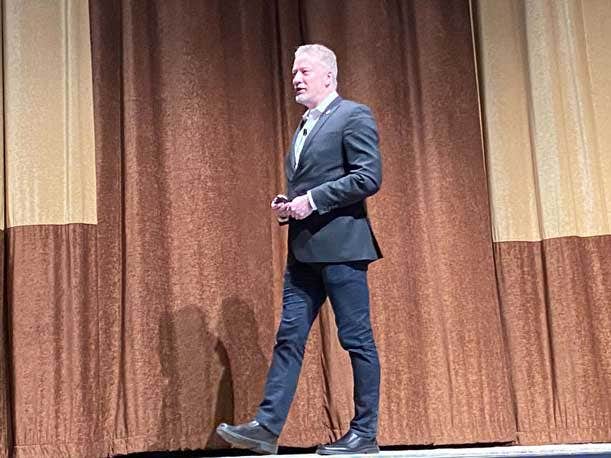
Scale Computing CEO Jeff Ready
Scale Computing is preparing its customers for the next 20 years of computing, CEO Jeff Ready said Thursday, kicking off his company’s inaugural customer event in Las Vegas.
“‘Scale Computing is poised to be the application platform for the next 20 years of computing infrastructure,” Ready told the audience at Scale Computing’s Platform 2023. “At Scale Computing, we strive to be the best vendor our partners and customers have ever, or will ever, work with in their careers.”
Ready said the work Scale Computing has done for 15 years, designing systems for its mid-market and distributed enterprise customers, has laid the foundation for its success in the edge. Over the last year Scale Computing has seen a dramatic rise in revenue, up 30 percent for the year after closing out record quarter after record quarter, Ready said. Scale Computing’s installed base has grown by 70 percent since the pandemic, which Ready partially attributed to the uncertainty around Broadcom’s pending acquisition of VMware.
Since the May 26 announcement by Broadcom that it would buy the Scale Computing competitor for $61 billion, Ready said his team has seen a sharp increase in engagement with bigger customers, he told CRN ahead of the conference.
“They‘re looking for a VMware alternative. And that is the moment in time where you can open their eyes and say, not only is there a VMware alternative that’s going to be less expensive and easier to manage,” he told CRN. “But it sets the groundwork and the foundation for where you‘re going to go over the next 10 years.”
Scale Computing partnered with Intel last year to debute an HCI device for the edge. The NUC EEC was announced at Intel Vision. Ready said customers can expect more products this year as Scale looks to grow technology at the edge, which in turn gives partners a chance to grow.
Ready said the rush for cloud and SaaS products has chipped away at partners’ relationships with their customers, in addition to shrinking margins. He sees the growth of the edge as a massive hardware opportunity for partners as well as a way to get closer to customers who can’t manage the device updates and software lifecycle of thousands of point of sale or IoT units at the edge.
“The edge is an opportunity to get some of that back,” he told CRN.
For Ready, the edge is fulfilling the promise of what the cloud is supposed to do.
“The edge is really the completion of the cloud vision,” Ready said. “The reason it‘s referred to as a cloud is that compute was just there. The cloud did not mean ‘A big data center in Seattle.’ That is not what was visualized. It was ubiquitous computing. And we’re gonna get there. It could be a few years. But we‘re trending in that direction.”
Ready talked with CRN about the future of Scale Computing, its partners and where the market is headed in 2023:
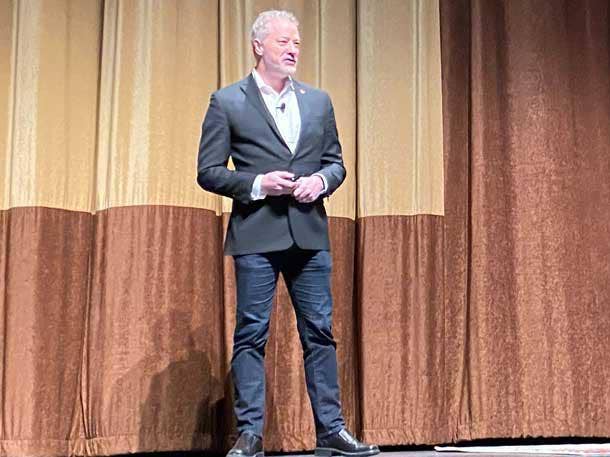
Just recently a lot of next-generation chips and processors have been bringing more compute capability closer to the edge. How close are those future-state descriptions from Dell or Nvidia about true AI and ML model processing at the edge, or the ability to run massive workloads at the edge, to becoming reality?
There are two pieces that have to converge to achieve what I would call true widespread adoption of the edge. One, the technology itself has to exist. You have to have hardware. And two, they have to be at a price point that then makes sense.
And typically things are really expensive when they first come out, and ultimately they start to get commoditized and mass produced and all of these things. I think that we will get there. And when we do get there, what you‘re going to have is this idea [that] compute resources are ubiquitous and everywhere.
And what that means is you don‘t have to move all the data around in order to process it. And it is the moving of the data that introduces latency in any decision making. It could be an AI app, it could be you’re trying to load your email or something. It‘s the physical distance that is causing that latency.
And so as the management, the deployment, the cost of getting all that compute out there, that‘s not trivial, but that’s where we‘ll get and then you’ll just be able to have these kinds of decisions being made, everywhere.
The edge is really the completion of the cloud vision. The reason it‘s referred to as a cloud is that compute was just there. The cloud did not mean ‘A big data center in Seattle.’ That is not what was visualized. It was ubiquitous computing. And we’re gonna get there.
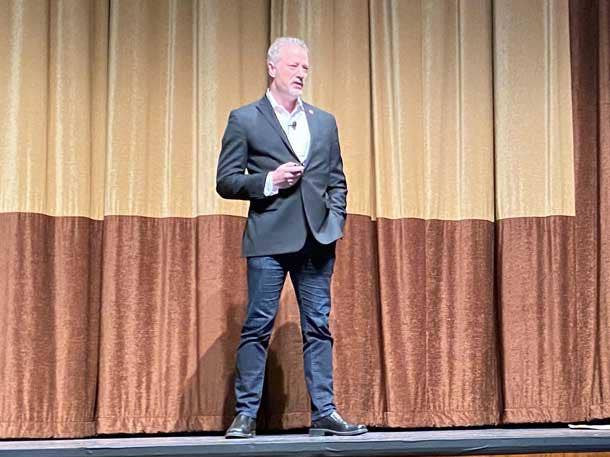
We hear a lot from vendors about what the edge is going to look like, but for partners what does the edge look like now, where is there opportunity?
Often, what you‘re seeing on the factory floor, there are multiple, mini-infrastructures deployed. A little cluster over here by this robot. A little cluster over there. And so even on a single factory floor you can visually see there’s five or six different micro data centers deployed.
You think about taking that to an order of magnitude or even two orders of magnitude more, and you can see hints of this already. There are a lot of AI apps that use video and it‘s doing some kind of AI analytics. Sometimes that AI app is running on a server. The video is being fed to the server and you’re processing on the server, but some video cameras now have AI chips built into them.
That ‘building into them’ of the AI chip is a step in this direction, where you‘ve got a lens collecting images, and you’re doing the compute there.
Also, I‘ll just use retail, as an example. Say they deployed a point of sale system, or a video surveillance system or something, five years ago. When is the last time the BIOS was updated on that server? And the answer is probably the day it left the factory.
There‘s no IT personnel on site, are you going to have a store manager update the BIOS? I don‘t think so.
Now, alternatively, if I have 1,000 stores, and I‘m deploying five servers in each store to run these applications, what you’re talking about is a 5,000-server deployment.
That is a very large data center at the end of the day. It just so happens that those 5,000 servers aren‘t physically all on the same rack. So what!
It doesn‘t change how you want to think about managing those servers. You don’t want to manage 5,000 individual servers, you want to manage one platform. And that‘s really what the edge management and orchestration software does.
It‘s recognizing that those 5,000 servers across those 1,000 locations is one deployment, and you’re going to manage it as one thing, and you‘re going to have one team or one person in place to do that, not five IT people at each site.
But it wasn‘t that long ago that they did, and nobody wants to go back to that.
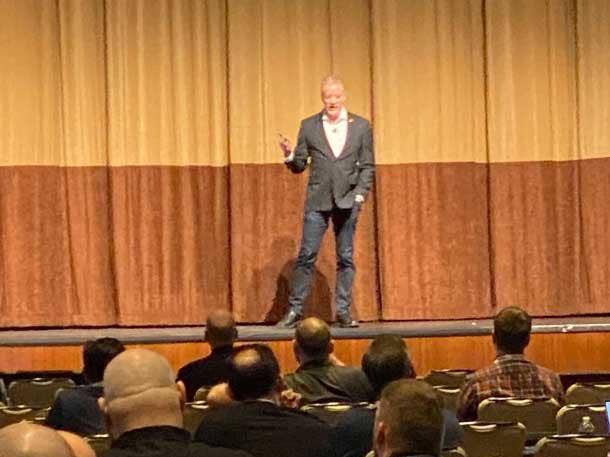
We are coming up on nine months since Broadcom announced its intention to buy your competitor, VMware. We talked last year about this, how has the market responded all these months on?
One of the most successful marketing, lead-generation opportunity, lead-generation campaigns that we ran with our partners in 2022 was being the VMware alternative. The Broadcom deal just creates a moment in time where that‘s at the front of somebody’s mind.
And so where we‘re finding success with our partners is, tactically, you can engage a prospect with the idea of a VMware alternative, because they’re sort of already warmed up to it. They’re thinking, ‘Oh, maybe I should look at something else.’ Then you toss in macroeconomic concerns, budgets getting cut, VMware is coming up for renewal, it looks like Broadcom is gonna raise the price. [Broadcom CEO Hock Tan has said repeatedly he does not plan to raise VMware’s prices, however doubts about those statements persist in the marketplace] What am I going to do?
Well, if we can reduce that price and reduce the staff required to run it, now you‘re starting to be able to save money - and that’s the start of the conversation. The start is, ‘Okay, you have a problem, an acute problem: VMware. Here‘s a solution.’
But then you turn it into a strategic conversation, which is how are you talking to your customers about edge computing? Are you leading them down a path, where it‘s not just ‘Here’s the solution for 2023,’ but the decisions you‘re making and 2023 are setting the stage for the next five or 10 years?
You can marry those two things together, you gain interest from the VMware alternative, and then you lay the groundwork for the edge.
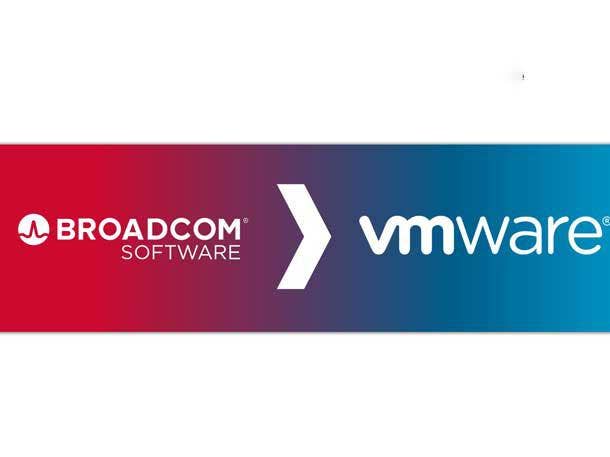
What are some of the headwinds, tailwinds, or ripple effects of that deal?
We have definitely seen over the last six months, let‘s say, the second half of the year, we’ve seen a substantial increase in the size of opportunities, the size of customers who are looking at Scale Computing.
That‘s not 100 percent attributable to Broadcom [and] VMware, but it doesn’t hurt. There’s certainly a number of businesses that say, ‘Okay, we‘re going to deploy at the edge. There’s lots of locations, so dozens or hundreds or thousands, or tens of thousands of locations, looking at Scale.
In those cases they know they probably already were going to be a little bit hesitant about VMware. They‘ve managed VMware for years. It doesn’t feel like the kind of thing you want to manage 10,000 instances of, then you add the Broadcom deal on top of it. And it‘s like, ‘Okay, before we pull any trigger, we’ve got to look around.’
That has definitely provided some tailwinds. And, it‘s not slowing down. In fact, it’s accelerated, I suspect, as it gets closer to that deal being real.
More importantly, most customers are on anywhere from a one- to five-year licensing cycle. I imagine we‘re going to continue [to have] tail winds from that over the next five years, and probably the fat part of the curve is really not even this year. I suspect it’s 2024 and 2025 when we‘re seeing the biggest migration away from VMware. I hope so because we’re already seeing a lot now.
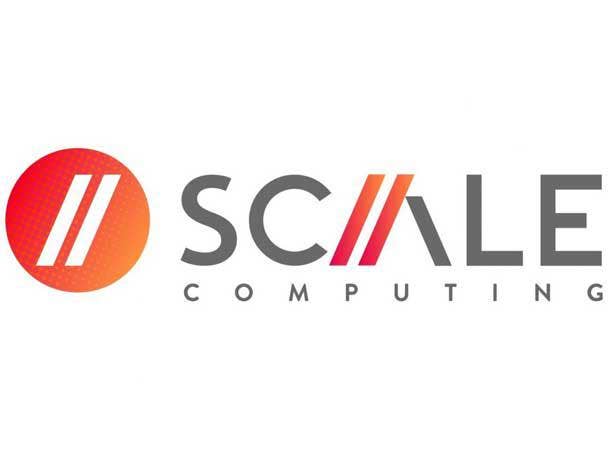
How is Scale meeting the need from partners and customers for managing all those points at the edge?
One of the biggest challenges at the edge is what Gartner would call edge management and orchestration.
The Scale Software stack. It‘s called SC platform. It’s effectively a combination of the operating system that‘s running locally, that’s running the applications in a particular store, as well as the aspects that are referred to as fleet management.
So that‘s the idea that I’ve got 100 to 10,000 systems out there. But I need to centrally manage all of those things. And this is what I was getting at when I said manage it like a cloud. I want to be able to say, in my example, that next application, ‘Hey, I need to deploy this new application or update that old application in these 852 sites. And I only want to hit the button one time.’
And then that happens centrally. So that feels like a cloud. I‘m just going to log into the portal, I’m going to do this thing. But physically, the electrons are going to go over the internet, and they‘re going to sit down at the edge location, they’re going to install and run and update and all those different things. It should never feel like I‘m managing in that example. 852 data centers. Good Lord. It should feel like I’m managing one.
But it‘s the software that handles the management and orchestration.